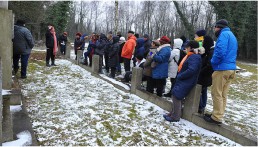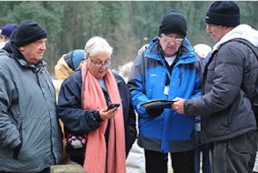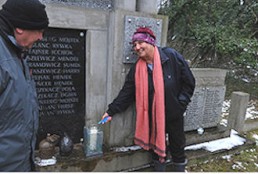I Will Return to Connect the Dots
by ADAYA KLIN (Second Generation Częstochower, Israel)
My father, David Krakauer, was born in Częstochowa in June 1924. Throughout his life, he tried to tell us his story. Sometimes we listened and sometimes we didn’t. When I grew up, got married and had my children, I began to listen in earnest to his life story. At some point in my life, I joined the staff of instructors at the Ghetto Fighters’ House and, through the guidance of the Museum staff and through young people on trips to Poland, more and more stories penetrated my skin; so much so that the Holocaust has become central to my life.
Long before the passing away of my father and mother-in-law Tosia Klein (nee Krause, who was also born in Częstochowa), Alon Goldman suggested that I join the Association of Częstochowa Jews in Israel. I declined his offer then. I felt overwhelmed by the evidence and the research.
I then forgot all about it and went on with my life, until a few months ago, when I was asked by Dr.Sharon Geva, a historian who lectures at the Kibbutzim College, to write, in her blog “Women in History” about Dorka Sternberg and the Bram family. Dorka was a very well-loved woman whom I met at the Ghetto Fighters’ House. I entered my father’s name in the blog, mentioning that they had both worked in the HASAG-Pelcery forced-labor camp in Częstochowa.
I don’t know how the article came into Alon Goldman’s possession but, the day after its publication, he sent me a picture of the cemetery mass grave. Engraved among the names on it were members of my father’s family.
Between here and there, my heart didn’t stop beating. As soon as the next trip to Częstochowa was announced, I hurriedly filled out the application form. I went very excited.
I had already visited the city in 1992 with my sister, mother and father, but my memories of that journey are terrible, a true nightmare. My father was agitated and wandered around the city like some ghostly incarnation of Amok. He spoke only in Yiddish and Polish and didn’t see us at all.
This personal trip was to be a correction. This was to be a reunion of a different kind.

The story of Sigmund Rolat, who grew up in the city and spent the Holocaust, and a short time after, in Częstochowa, dovetailed with that of my husband, Giora (Grzegorz) Klein. He also grew up in the city after the War. The photographs and sights in the Częstochowa Jewish Museum, the Ghetto area and the highlight of my visit, the Jewish Cemetery, where I told my family’s story and was able to say Kaddish. I never thought of saying Kaddish or lighting a candle. These are rituals which I never practised in the cemetery at my family’s graves. But the group offered, asked, and I responded. I thank them very much for that.


What surprised me and lingers as an unsolved question – Why did my father not take us to the cemetery in 1992? Why did he run around the city from place to place and not go to the cemetery? After all, both the mass grave and the martyr’s monument, on which his family names are engraved, were erected after the War. This is something which I will never know.
I have no doubt that I will return to the city with my sisters (if they will want to come with me) and reconnect the dots. I don’t have enough words to thank Alon Goldman. Through him, I have learned so much new information about Częstochowa. Thanks to him, I participated in this journey. Thank you, of course, also to Sigmund Rolat and all the people in the city and our supporting group.
It was a once in a lifetime journey.
